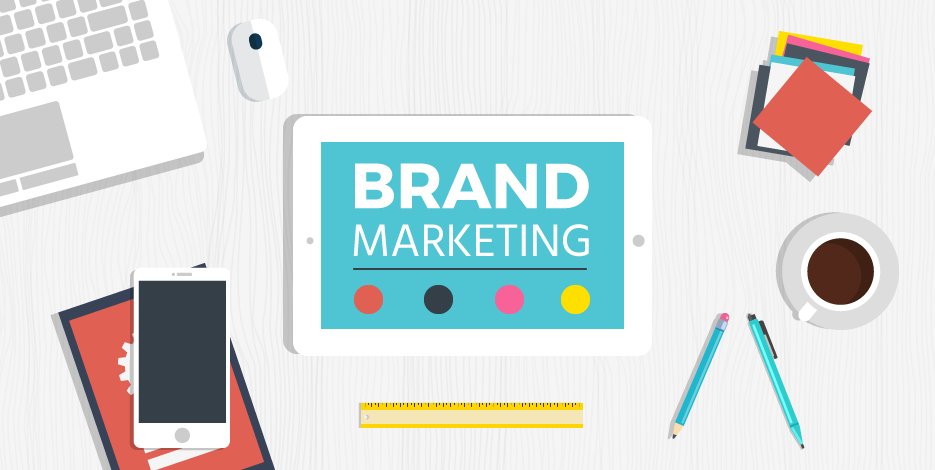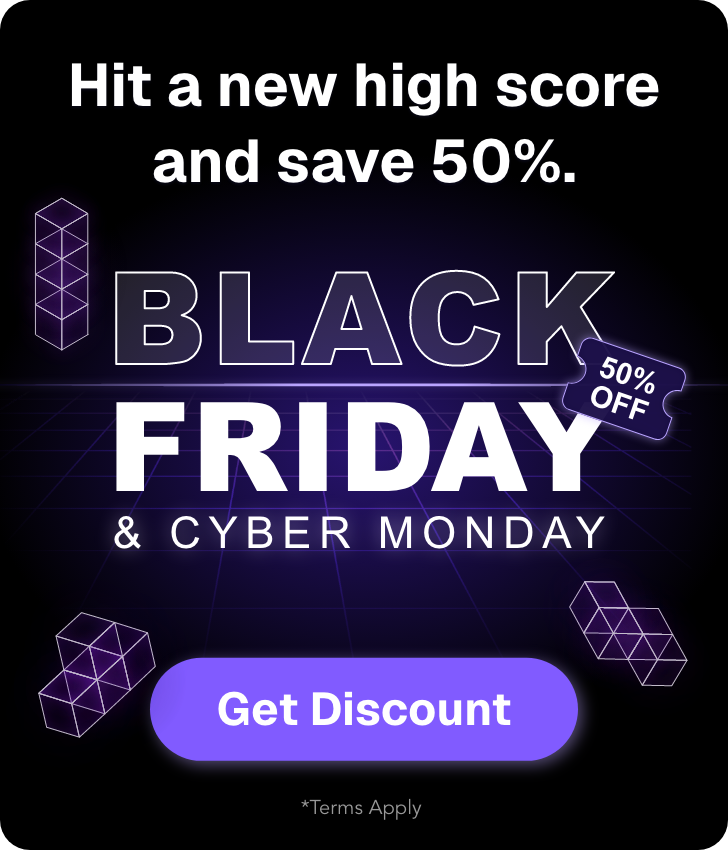

Brand Marketing: The Ultimate Guide To Spellbound Customers
You are sitting all nice and comfy on your couch, eyes glued to the screen.
Munching on popcorn you are waiting for Harry Potter to grab his wand and say the magic words.
“Brandum Leviosa!”
Wait, what?
That’s right fellow marketer.
This is the very special episode where we Harry Moo-tter your marketing strategies, revealing the magic spell that will elevate your brand!
Which in Muggle language is called…
…Brand Marketing!
What Is Brand Marketing?
Just like the invisibility cloak, (ok, I’m almost done with the Ηarry Potter metaphors here), brand marketing is a powerful weapon you know is there but cannot see. Magic and powerful, it covers your brand identity and extends your value proposition.
But first port of call when studying brand marketing is to define the term “brand”.
And if you don’t, believe me, I challenge you to stop what you’re doing right now (ok, maybe after reading this article) and go to a bar.
Ask 10 different people around you to define “brand” and I bet a round of drinks that all 10 of them will give you a different answer.
Yes, I am that sure. So you can skip the fun part and keep reading instead.
Defining a brand can be tricky, and that has nothing to do with the amount of alcohol you’ve consumed.
Maybe a little help from the experts would help?
David Ogilvy, the “father of advertising”, defined brand as “the intangible sum of a product’s attributes”.
Seth Godin, marketing guru, explains that “a brand is the set of expectations, memories, stories, and relationships that, taken together, account for a consumer’s decision to choose one product or service over another”.
And Jeff Bezos, CEO & founder of Amazon says that “your brand is what other people say about you when you’re not in the room”, a definition I personally love and believe is the best place to start when trying to grasp the essence of branding.
Because brand is the way in which your customers, employees, and the public perceive your company, regardless of what you think or desire to make of it.
So, if we combine the meaning of brand with the meaning of marketing, this leads us to the (sober) conclusion that brand marketing is the theory and strategies you choose in order to build your brand, raise brand awareness and recognition.
Now let’s see why your marketing strategies are empty without it.
Why Brand Marketing Is So Effective
Even though it’s hard to define it, somehow we all know that brand marketing is crucial for any company. Just imagine how powerful it is if first impressions for a brand are formed in the first 10 seconds!
Think of how you need, yes, need a Coca Cola when eating pizza. Think of how you “Google” something. And think of the time you described a fun day you had comparing it to Disneyland.
This. Is. Brand. Marketing.
You see, brand marketing is all about customer recognition and loyalty. It promotes your brand in order to increase brand awareness, attract new customers and stay forever in their heads.
A well-branded company makes it easy for customers to put it in a context in their everyday life.
For example, people know exactly what they will get when they walk into a McDonald’s.
They trust the brand because it offers consistency and gives them the confidence to know what to expect. Which leads to long-term relationships with customers and credibility.
Good brand marketing also leads to brand equity, beneficial for every company’s reputation as well as for its’ products or services.
Strategic and consistent brand equity boosts their value and ensures that the customer will choose them over the competitors’.
Marketing VS Branding
I know I’ve explained everything perfectly (perfection being my middle name, thank you very much) but before rolling up our sleeves to dive into the brand marketing nuts and bolts there’s something more I need to make clear.
Branding and marketing are two different things.
And branding always comes before marketing.
Branding is your identity and values while marketing is what you are trying to say to your audience.
What you must know is that, while marketing is your way of doing things for your company, branding is in the hands of your customers.
Marketing is a powerful tool to help you control your brand, but branding is something you can’t wholly control.
And it involves listening to your customers because they are the ones who will guide you and show you what they think your brand is or should be. It might be hard to admit but, yes, they know better.
What is more, marketing is about your tactics to find buyers, while branding creates devoted customers, fans and followers.
Which means that you can spend all the money in the world advertising your company, but if your customers don’t get the message of who you are they will never fall in love with you. Isn’t that what true love is all about after all?
Long story short, marketing is how you make your audience aware of who you are. Branding is who you are.
How To Do Brand Marketing: Finding The Platform 5
Ok, we’ve covered what branding is and how it’s different from marketing. So I think we are ready to take this to the next level.
Learn how to develop a brand strategy that would lead the way to Hogwarts and make Steve Jobs Proud.
Because with the right brand strategy you will be able to beat the competition, position your company in the market and create customer expectations that you can fulfill.
1. Define Your Brand Strategy
Marketing your product or services is impossible if you don’t first define your brand.
And in order to do this you must define three things:
Your value proposition
- What do you promise to offer to your customers?
- Why should they choose you over another company?
- And why do they need your product or services?
Answering all these questions will lead you to a solid value proposition that will make you stand out from the competition and earn you a place in the market.
Your target market
Your target market is the people you want to reach through your marketing strategies, the ones that will understand your brand and the ones that need it.
Defining your target market is crucial because it’s the only way to understand how to create strategies that will reach your prospects.
Your employer identity
Employer branding is your reputation as an employer and what makes you attractive to potential employees.
And don’t forget that your employees are your company’s face. Because the employer you are is projected on their work and every level of your organization in general.
So, if you want to hire the right people you must first decide what kind of an employer you are and convey your values.
2. Determine Your Brand Marketing Objectives
Setting clear goals can help your business grow, improve teamwork and show you the way to marketing success. When setting your objectives you must answer the 5 W’s: why, when, where, who.
Be specific and set goals that are attainable, measurable and most importantly relevant to your niche.
3. Develop Your Brand Marketing Positioning
Knowing that you are better than your competitors is not enough.
You also have to prove it. With a few words. In one line.
I’m sorry if I sound too harsh but if you can’t define your brand positioning quick then how do you expect to draw your customer’s attention?
Reserve a special place at the marketplace by creating a positioning strategy that focuses on all points of contact with the consumer.
Understanding your competitors and their positioning and identifying your company’s unique points are the steps you need to take in order to create a thrilling brand positioning.
4. Create A Memorable Image
Do you know who this is?

Does this line ring a bell to you?

And what do these colors remind you of?

I could just leave these here without further explanation. But I can also spell it out for you.
You can’t do brand marketing right unless you do logo, colors, tagline, and packaging right.
The visual assets you use have to ensure your differentiation and speak of your brand’s personality.
Picking the right font, color palette, lines, and symbols can create connections, communicate the message you want to convey and enhance brand awareness.
Riding The Brand Marketing Strategy Express
Brand marketing is easier than you may think. And you can implement various brand strategies in your marketing plan in 4 different fields.
1. Email Marketing
Email marketing is one of the most cost-effective marketing mediums today, no doubt there.
And you can easily create successful email marketing campaigns with the help of a powerful email marketing platform like Moosend.
These campaigns not only do a great job of converting prospects into customers and boosting your sales but they also build up brand awareness.
For a successful brand strategy, you should be aware of the 3 factors of a good email:
Images
We live in the age of visual content. And this doesn’t only apply to your website and posts.
Images are of equal importance to your email marketing campaigns. According to Hubspot, 65% of users like emails mostly made up of images, while only 35% prefer a lot of text in their email.
An email with the right images can give the overall tone of your company and set you apart from the competition. As long as you know who you want to be.
Go for consistency and emotions that build familiarity and expectations so your audience knows it’s you without even having to read your message.
Always use high quality, optimized images and forget about stock photography.
Instead, hire a professional photographer that will create unique images that match your company’s style and will become your brand signature.

Of a Kind is a super chic online boutique showcasing emerging designers. They go for light colors, a sophisticated font and most of all clean images that reflect the brand’s style and bring out the products.
The quality helps to drive the message of class and uniqueness home while the sharpness helps the reader get a feel of the material. Who can speak of your product better than your product anyways?
Text
Your voice is your brand’s personality. What you say and how you say it makes you who you are. So choose the right tone and words to pass the message your company wants to convey.
In other words, choose your role.
Take a look at The Body Shop newsletter I received a few days ago.

Don’t you just love it?
Taking full advantage of the summer ahead of us the beauty company creates a newsletter for everything a girl needs for summer preparation.
And in case you don’t know what you need, they remind you of it with a title and small texts that casually explain what every product is for.
The font aligns with the carefree feeling of this email and totally matches The Body Shop, while the cute drawings complement the yellow background ideally while also enforcing the message.
Do you want to come across as a friendly one? Or maybe serious? How about funny?
No matter what you go for you must stick to it and not switch styles every time you send an email. Also, make sure your copy is clean and error-free, with consistent fonts.
A representative tone inspires confidence and reliability while reflecting your brands’ values ideally.
Layout
We all are moody and indecisive in our lives. And that’s ok.
But this should never show on our business! Because building brand awareness is all about consistency.
And your email marketing campaigns should look and feel like they were sent from the most stable person on earth. Yeah, you.
I know what you’re thinking.
“Oh but Sophie, you promised to leave Harry Moo-tter out of this. Now how am I to create this illusion by myself?”
Don’t worry, you don’t need a magic wand for this one.
All you need is to choose a professional looking email template that will be the face of your company.
Depending on the business you’re in, you should decide on the right copy length, colors, image positions and overall style that aligns with the company’s objectives. Also, make sure your logo design is visible and high quality.
Personally, I love receiving emails from Bon Appétit.

Their template is clear and clutter-free, with just the perfect amount of text and interesting new articles.
They always use a food picture as the star of their email and their images are extra attractive.
Also, the feeling you get when you read their newsletters is the same as you get when you visit their website.
The perfect newsletter design will serve the purpose of your newsletter while reinforcing brand recognition and making your newsletter instantly recognizable.
2. Social Media
Oh, the innocent days of social media. Where all they did was make you jealous of your friend’s vacation and help you stalk your crush. Today though they are one of the most powerful means of brand marketing.
An advantageous marketing campaign on social media is a significant driver of brand loyalty because it can be highly engaging, entertaining and interesting and most of all shareable.
What is more, a social media brand strategy can provide incentives to the social media users to spread the word about their presence as well as spot and hire influencers in their target market to pull people to engage with your brand.
What the audience needs today is humanized brands. And this is even more important when it comes to social media.
So, to build a successful social presence to market your brand you must first create a complete buyer persona that will be your alter ego and will be consistent regardless of the platform you are using or the message you are trying to convey.
Searching the Internet for the most successful brands on social media I came across this very interesting article from Newswhip on how Missguided went viral and skyrocketed its brand awareness, increasing revenue 75% in 2017.
A pro when it comes to connecting with Gen Z, the fashion retailer makes the most out of social media just by being themselves.

Facebook, Instagram, Twitter, you name it.
These guys have a way of creating viral content with flying colors.
Because you know what they are? Consistent!
They know who they are, they know who their audience is and they market their brand by posting relevant, sexy and funny content that never fails to convert.

These fries are no fashion, let me tell you. I mean, come on, fries before guys? Then why does feel more Missguided than anything?
Today Missguided can boast of having over 1.2 million likes on Facebook and over 4 million followers on Instagram. These people must be pretty aware of the brand if you ask me!
3. Storytelling
Stories were, are and always will be captivating. So if you want to catch your audience’s attention you better have a good story to tell.
Profitable and human, storytelling makes for the perfect business tool and competitive advantage. If told right.
To nail it you need to know how to talk about your product or service. Which means knowing your product. If not, please go back to the beginning of this article. If you do, then it shouldn’t be hard for you to tell a captivating story that fits your brand.
Use narrative to share your company’s history, value propositions, and progression and you are sure to tell a story that no other brand can tell. Because it’s your story!
I think you will agree with me that one of the best examples of storytelling in business is IKEA.
Taking the brand beyond just products, the Swedish retailer uses its catalog, videos, and social media to share stories that everyone enjoys and can relate to.
As much as I love skimming through IKEA catalogues, my heart belongs to this “Oddly IKEA” campaign, a 25 minute long ASMR sensation I watched from beginning to end.
And so are you. Creating such a long video when 2 minutes is the tops, is risky marketing. But in this case, it all works fine.
Because IKEA has a story to tell and tells it to the right audience. Dorm solutions blend in with super soft sounds, a calming voice and attractive prices to make one of the most weirdly satisfying Ads ever.
Explaining the idea behind this campaign to Adweek, Ogilvy’s creative director Della Mathew and Ikea External communications specialist Kerri Homsher said:
“We knew that ASMR videos are very popular, especially with young people, college students and IKEA co-workers. So we put two and two together. Our products are designed to help people every day. Our dorm room solutions help students relax after a long day. So we thought of content that does the same. A series like this is very much in keeping with the Ikea character. Plus, the format of ASMR videos allows you to deliver product benefits in a pleasant, calming way, something a TV spot or print ad doesn’t always succeed at.”
Let alone that video is now the most popular content you can create, according to Hubspot.

ΙΚΕΑ has its way of showing-not-telling its customers on how to improve their lives with campaigns that always hit the mark.
Still not taking notes?
4. Content Marketing
Tired of the word content? Well, I’m sorry but all magicians have their favorite spells.
Content shines out once again because of its power to show your customers who your company is and what your brand represents. And while images are worth a thousand words, nothing outbeats the power of these specific thousand words per see. Also, they can know the impact of good content by measuring content ROI.
Before creating the right content for your brand you must take a step back and study your audience.
- What are their interests?
- What is their age?
- Where do they live?
- What do they need?
After you answer these questions find the right platforms to spread the word. You are here to stay.
Through blog posts, landing pages, videos and ads you have the power to supercharge your branding campaigns and set your brand apart from your competitors.
Who can forget the amazing campaign Coca Cola launched in 2011?

“Share a Coke”, which still runs until today, takes personalization to a whole new level by using the No1 personalization weapon there will ever be. Names.
You don’t have to be a Coca Cola lover to adore this campaign.
Your name, or your best friends name, or your lovers’ name on the bottle is more than enough to make this work, as consumers love anything that feels like it was made especially for them.
And by asking them to share a Coke with someone, the campaign also managed to create an emotional connection with its consumers.
It didn’t take long for this campaign to go viral through customers posting on social pictures of a bottle with their name on it.
How Marketing Automation Helps Brand Marketing
By now I hope it’s clear that customers are the core of your branding. So, it goes without saying that your relationship with them should be more than perfect.
To create a strong brand that your customers will choose over and over again you must offer memorable experiences characterized by your company’s overall style.
And this is where marketing automation comes in.
Marketing automation is here not only to make your life easier but also to help you create a seamless customer experience that is an essential element of good brand marketing.
This can be achieved via the 3 different categories of marketing automation tools:
Email Marketing
Personalization at its best, email marketing automation can help you create a strong, thoughtful brand that your customer’s mother would approve of.
Welcome them when they subscribe to your newsletter, say thank you when they place an order, wish them a happy birthday and help them buy only the things that are best for them.
In other words, create timely, relevant, highly personalized emails, time or action triggered, that will make them feel special and make your brand win a special place in their hearts.
Social Media
Brand awareness today is well linked to social media. But, as the number of users on social platforms continues to increase, marketers have a hard time fully engaging with their audience.
So let’s give it up for social media automation software ladies and gents!
Tools like Zapier, Buffer, and Buzzsumo let you plan, schedule, and share your social media posts without human intervention, helping you develop better branding strategies.
Effort Measurements
Like with all magic spells, marketing automation can make your life easier but if you don’t use it right it won’t have the desired results. Meaning it is super easy to set up a workflow and just forget about it.
But this is not the only purpose of marketing automation. In order for it to prove effective, you should always be measuring the performance of your workflows.
Otherwise, you will never know what works best for your brand and your audience. Measure the engagement rate, post reach, visits, and conversions and create smarter processes with brand consistency and communication in mind.
Common Brand Marketing Mistakes
We all make mistakes. And this is totally acceptable in our everyday lives. But not in marketing.
Because a mistake here can put your brand at risk and cost your company millions. So don’t jump the wand and take notes before elevating your brand marketing.
You could also check branding tools like Rebrandly
Lacking social media understanding and engagement
According to GlobalWebindex, 54% of social browsers used social media in 2018 to research products. So, if your brand marketing strategy doesn’t involve social media then you are definitely missing the mark. And harming your brand.
Without the proper social media strategy, you are most likely wasting precious time when you could instead outsource this to a social media management company and deal with other important aspects of your business.
What is more, if you don’t engage with your potential clients you are missing out on audience goals and leading your brand strategy astray. If you want to be on the successful side you should be consistent and speak directly to your customers’ hearts because this is the essence of branding.
Staying Stale
A successful marketing campaign is something we all welcome. But this doesn’t mean you should rest on your laurels afterward.
Nor does it guarantee you that all your marketing campaigns should hit home from now on.
Your audience’s needs and expectations change faster than you may think so if you have nothing new to tell them and no new ways to represent your brand then your customers will cruise past you.
Keep evolving, follow new trends, content ideas, and keywords to stay fresh and relevant as any other strong brand does.
Failing To Understand Your Audience
This is my last point and it’s a biggie.
As exciting as it may be starting and building a business, remember: it’s not all about you.
Your target audience plays a huge role in defining your brand’s personality and overall branding.
And if what you create doesn’t resonate with them, chances are they will not engage and will not buy your product or services.
Take the time to understand your audience and don’t presume you know them.
Actually, get to know their needs and opinions, spend time with them and help them to get to know you as well.
By creating a brand that not only meets your personal preferences but your audience’s expectations will help you maximize your brand strategies and stay at the top of your game.
Breaking The Spell
Oh dear, oh dear, that was enough magic for one day!
Now that I’ve wizard-ed everything out for you, you are ready to raise your wands and “Brandum Leviosa” your very own brand.
You can’t go wrong with this guide!
Jump on the brand marketing bandwagon and create a memoo-rable and unique company by staying true to your vision and living up to your customer’s expectations.
And if you liked this article leave a comment below or just share the magic!



 Published by
Published by

 Published by
Published by
